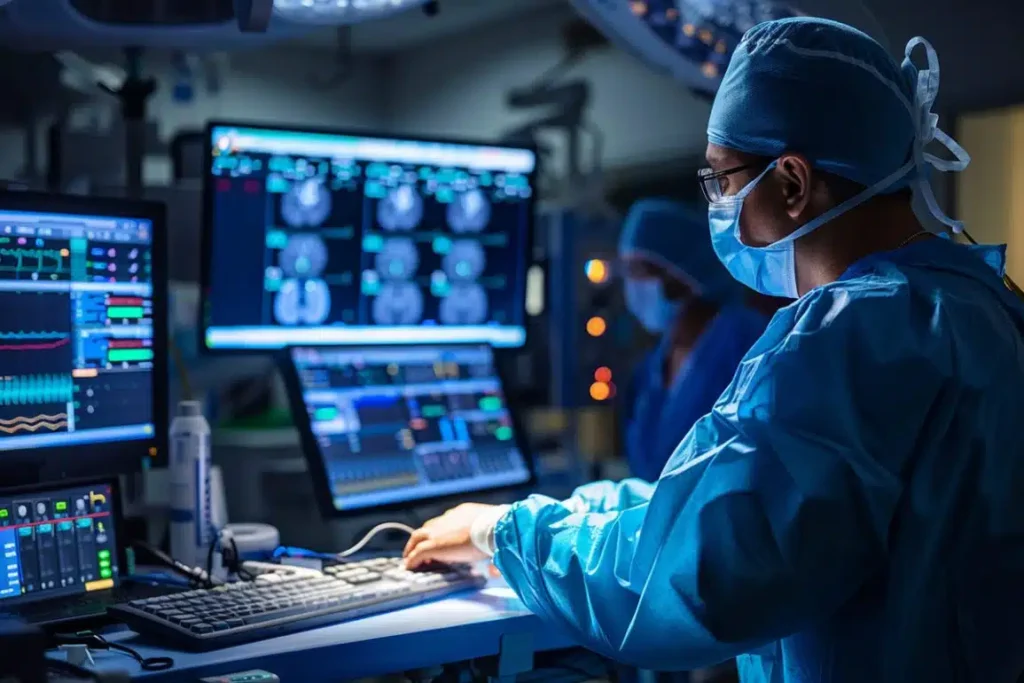
Doctors Can Now Watch Spinal Cord Activity During Surgery
In recent years, advancements in medical technology have revolutionized the way doctors perform surgeries. One such breakthrough is the ability to monitor spinal cord activity in real-time during surgical procedures. This development has significant implications for patient safety and surgical outcomes.
The Importance of Spinal Cord Monitoring
The spinal cord is a vital part of the central nervous system, responsible for transmitting signals between the brain and the rest of the body. During spinal surgeries, there is a risk of damage to the spinal cord, which can lead to severe complications, including paralysis. Therefore, monitoring spinal cord activity during surgery is crucial to ensure its integrity.
Prior to the advent of real-time monitoring, surgeons relied on indirect methods, such as visual inspection and motor responses, to assess the health of the spinal cord during surgery. While these methods provided some information, they were not always reliable indicators of potential damage.
How Real-Time Monitoring Works
Real-time monitoring of spinal cord activity involves the use of specialized equipment and techniques. The most common method is known as intraoperative neurophysiological monitoring (IONM). This technique allows surgeons to observe and analyze the electrical signals generated by the spinal cord in response to various stimuli.
During surgery, electrodes are placed on the patient’s scalp and limbs to record the electrical activity of the spinal cord. These signals are then amplified and analyzed by sophisticated computer systems. The surgeon can view the data in real-time on a monitor, providing valuable insights into the health and function of the spinal cord.
The Benefits of Real-Time Monitoring
The introduction of real-time monitoring has several benefits for both patients and surgeons. Firstly, it allows surgeons to detect any changes in spinal cord activity immediately. This early warning system enables them to take prompt action to prevent or minimize potential damage to the spinal cord.
Furthermore, real-time monitoring provides surgeons with valuable information about the functional integrity of the spinal cord. By assessing the electrical signals, they can determine if the spinal cord is functioning properly and identify any areas of concern. This information can guide the surgical approach and help optimize patient outcomes.
Real-time monitoring also enhances patient safety during spinal surgeries. By continuously monitoring the spinal cord activity, surgeons can make adjustments in real-time, ensuring that the surgical procedure is performed with precision and minimizing the risk of complications.
Applications of Real-Time Monitoring
Real-time monitoring of spinal cord activity is particularly beneficial in complex spinal surgeries, such as spinal fusion or tumor removal. These procedures carry a higher risk of spinal cord injury, and the ability to monitor the spinal cord activity in real-time provides an added layer of safety.
Additionally, real-time monitoring is valuable in surgeries involving the correction of spinal deformities, such as scoliosis. These procedures often require precise manipulation of the spinal cord, and the ability to monitor its activity allows surgeons to navigate the surgery with greater accuracy.
Furthermore, real-time monitoring can be used during surgeries to assess the effectiveness of interventions aimed at preserving spinal cord function. For example, in cases of spinal cord trauma, surgeons can evaluate the impact of certain treatments or therapies on the spinal cord activity.
Conclusion
The ability to watch spinal cord activity in real-time during surgery is a significant advancement in the field of medicine. It provides surgeons with valuable insights into the health and function of the spinal cord, enhancing patient safety and optimizing surgical outcomes. As technology continues to evolve, we can expect further advancements in spinal cord monitoring, ultimately improving the quality of care for patients undergoing spinal surgeries.


